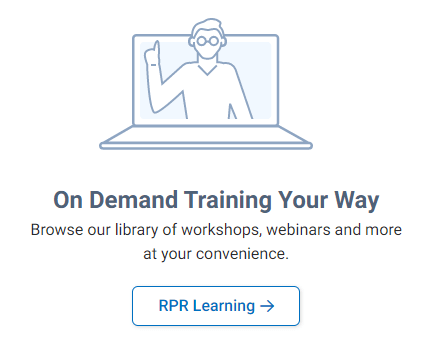How to Start a Hot Shot Business: Complete Guide to Launching Your Expedited Freight Service
Understand the hot shot trucking industry
Hot shot trucking represent a specialized segment of the freight industry focus on time sensitive, smaller loads that require expedite delivery. This business model fill a crucial gap between standard trucking services and overnight courier operations, serve industries that need quick transportation of critical parts, equipment, or materials.
The hot shot industry has experience significant growth as businesses progressively prioritize scarce in time delivery and lean inventory management. Companies across manufacturing, construction, oil and gas, and automotive sectors rely on hot shot services to maintain operations when standard freight options prove besides slow.
Essential requirements for start your hot shot business
Vehicle and equipment selection
Your success begin with choose the right equipment combination. Virtually hot shot operations utilize pickup trucks pair with gooseneck or bumper pull trailers. Popular truck choices include ford f 350, Chevrolet Silverado 3500, or ram 3500 models, all capable of handle substantial towing capacity.
Trailer selection depend on your target market. Flatbed trailers offer versatility for construction materials and equipment, while enclose trailers protect sensitive cargo from weather and theft. Consider deck over trailers for maximum loading flexibility or specialized trailers for specific industries like automotive transport.
Essential equipment extend beyond the truck and trailer. Invest in quality tie down straps, chains, binders, and tarp to secure various load types safely. GPS navigation systems, electronic logging devices (elds ) and communication equipment ensure compliance and efficiency.
Licensing and legal requirements
Operate lawfully require multiple licenses and permits. Start with a commercial driver’s license (cCDL)if your gross vehicle weight rating exceed 26,000 pounds. Many hot shot operations fall below this threshold, require solely a standard driver’s license with proper endorsements.
Obtain your motor carrier (mMC)number and department of transportation ( (t ) )mber through the federal motor carrier safety administration. These numbers identify your business in the transportation network and enable legal interstate commerce.
Register for the unified carrier registration (uUCR)program, which fund state safety programs. International fuel tax agreement ( (tIFTA)gistration simplifies fuel tax reporting across multiple states, while international registration plan ( ir()IRP)w operation in various jurisdictions with a single registration.
Insurance coverage
Comprehensive insurance protection form the foundation of responsible hot shot operations. Primary liability insurance cover bodily injury and property damage to third parties, with minimum requirements typically range from $750,000 to $$1million depend on cargo type.
Cargo insurance protects against loss or damage to customer freight during transport. Coverage amounts should, will align with the typical value of loadsyou willl carry. Physical damage insurance cover your truck and trailer against collision, comprehensive, and specify perils.

Source: stepbystepbusiness.com
Consider additional coverage options like general liability insurance for business operations, occupational accident insurance for owner operators, and bobtail insurance for non-dispatched driving.
Develop your business strategy
Market research and niche selection
Successful hot shot businesses identify and serve specific market niches efficaciously. Research local industries that generate time sensitive freight needs. Oil and gas operations oftentimes require emergency parts delivery to remote locations. Construction companies need quick delivery of specialized tools or materials to job sites.
Analyze competitor pricing and service offerings in your target area. Identify gaps in service quality, response time, or geographic coverage that your business could fill. Consider seasonal demand patterns and develop strategies to maintain consistent revenue throughout the year.
Geographic focus initially help establish reputation and operational efficiency. Master your local market before expand to regional or national operations. Understand local traffic patterns, customer preferences, and regulatory requirements provide competitive advantages.
Pricing strategy development
Effective pricing balances competitiveness with profitability. Calculate your operating costs per mile, include fuel, maintenance, insurance, licensing, and equipment depreciation. Add desire profit margins while remain competitive with market rates.
Many hot shot operators charge per mile with minimum rates for short hauls. Emergency or expedite loads command premium pricing due to urgency and service value. Develop rate structures for different service levels, such as same-day delivery, next day service, or schedule deliveries.
Consider value base pricing for specialized services. Customers oftentimes pay premium rates for reliability, communication, and professional service quality kinda than merely transportation. Build pricing models that reflect the total value proposition you provide.
Build customer relationships and finding loads
Load board utilization
Load boards serve as digital marketplaces connect shippers with carriers. Popular platforms include that, truckstop.com, and 123loadboard. These services provide access to thousands of available loads with detailed information about pickup and delivery locations, cargo descriptions, and payment terms.
Develop efficient load board strategies by set up automate searches for preferred lanes and load types. Respond rapidly to attractive opportunities, as competitive loads frequently book within minutes. Build relationships with brokers who post regularly on load boards to secure preferred access to quality freight.
Understand load board dynamics include seasonal fluctuations, rate trends, and regional demand patterns. This knowledge help optimize route planning and maximize revenue opportunities.
Direct customer acquisition
Direct customer relationships typically offer better rates and more consistent freight than load board opportunities. Identify potential customers through industry associations, trade publications, and local business directories. Target companies that generate regular hot shot freight needs.
Develop professional marketing materials include business cards, brochures, and a company website showcase your services and capabilities. Emphasize reliability, communication, and specialized equipment or expertise that differentiate your service.
Cold call and in person visits remain effective customer acquisition methods in the trucking industry. Prepare elevator pitches highlight your value proposition and be ready to provide references and insurance certificates upon request.
Broker partnerships
Freight brokers serve as intermediaries between shippers and carriers, oftentimes provide consistent freight opportunities for reliable operators. Research reputable brokers specialize in hot shot or expedite freight services.
Establish broker relationships by provide complete documentation include insurance certificates, authority verification, and references. Demonstrate reliability through on time delivery, professional communication, and accurate documentation.
Understand broker payment terms and factor potential cash flow impacts into your business planning. Some brokers pay promptly while others may extend payment terms to 30 days or longer.
Operational excellence and growth strategies
Route planning and efficiency
Efficient route planning direct impact profitability through reduce fuel costs and increase productivity. Utilize GPS navigation systems with commercial truck route to avoid restricted roads and identify optimal paths.
Plan backhauls to minimize empty miles and maximize revenue per trip. Develop knowledge of freight patterns in your operating area to identify potential return loads. Consider partial loads that fit your schedule and route requirements.
Maintain detailed records of route performance include fuel consumption, travel times, and customer feedback. This data help optimize future operations and identify improvement opportunities.

Source: stepbystepbusiness.com
Customer service excellence
Superior customer service differentiate successful hot shot businesses in a competitive market. Provide accurate pickup and delivery time estimates, so systematically meet or exceed these commitments. Communicate proactively about any delays or issues that arise during transport.
Invest in professional communication tools include hands-free phone systems and mobile internet access. Customers appreciate real time updates on shipment status and arrival times.
Handle cargo with care and maintain clean, professional equipment appearance. First impressions matter importantly in build long term customer relationships.
Financial management
Effective financial management ensure business sustainability and growth potential. Separate business and personal finances through dedicated business banking accounts and credit cards. This separation simplify tax preparation and provide clear business performance visibility.
Track key performance indicators include revenue per mile, operating costs, and profit margins. Regular financial analysis helps identify trends and make informed business decisions.
Establish emergency funds to handle unexpected repairs, insurance claims, or economic downturns. Many successful operators maintain three to six months of operating expenses in reserve funds.
Technology integration and modernization
Transportation management systems
Modern transportation management systems streamline operations through automate dispatching, route optimization, and customer communication. These platforms integrate with load boards, provide electronic document management, and generate performance reports.
Evaluate TMS options base on your business size and complexity. Simple solutions may suffice for single truck operations while larger fleets benefit from comprehensive platforms with advanced features.
Consider mobile applications that enable load management, document scanning, and customer communication from your smartphone or tablet. Mobile technology increase operational flexibility and responsiveness.
Electronic logging devices
Eld compliance ensure adherence to hours of service regulations while provide valuable operational data. Choose eld systems that integrate with your other business applications and provide user-friendly interfaces.
Use eld data to optimize driving schedules, identify efficiency opportunities, and ensure regulatory compliance. Proper hours of service management prevent violations that could impact your safety rating and business reputation.
Scale your hot shot business
Fleet expansion strategies
Business growth oftentimes require additional equipment and drivers. Evaluate expansion opportunities base on consistent customer demand and financial capacity to support additional assets.
Consider lease versus purchase decisions for additional equipment. Leasing may provide lower upfront costs and newer equipment while purchasing build equity and provide long term cost advantages.
Hire qualified drivers require careful screening, training, and ongoing management. Develop clear policies and procedures to maintain service quality standards across your fleet.
Specialized service development
Specialization oftentimes provide competitive advantages and premium pricing opportunities. Consider develop expertise in specific industries like automotive, aerospace, or medical equipment transport.
Specialized services may require additional equipment, certifications, or insurance coverage. Evaluate the investment requirements against potential revenue increases and market demand.
Build relationships with industry associations and trade organizations to understand specialized market needs and opportunities.
Start a hot shot business require careful planning, adequate capitalization, and commitment to operational excellence. Success depend on understand market dynamics, build strong customer relationships, and maintain high service standards. With proper preparation and execution, hot shot trucking can provide rewarding entrepreneurial opportunities in the growth expedite freight market.
MORE FROM resultsfordeals.com












